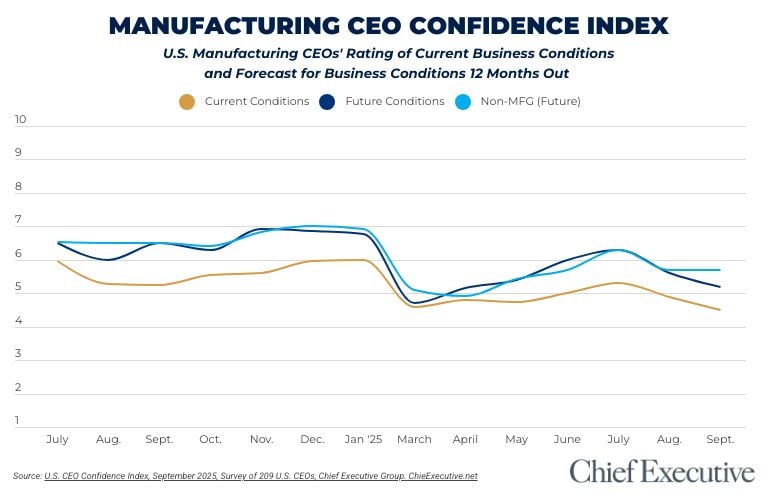
 In a perilous world of increasing risks, many growing mid-market companies lack sufficient risk mitigation plans. Experts say that mid-market organizations need more consciousness about the risks they face and need to create more effective strategies to address vulnerabilities and strengthen their resiliency.
In a perilous world of increasing risks, many growing mid-market companies lack sufficient risk mitigation plans. Experts say that mid-market organizations need more consciousness about the risks they face and need to create more effective strategies to address vulnerabilities and strengthen their resiliency.
Rob Kastenschmidt, partner and national leader of risk advisory services at RSM US, LLP, said that many organizations do not fully understand the risks they have assumed, and whether they are monitored, managed and fully aligned with their risk tolerance. He said while regulatory requirements and management priority have historically guided risk management efforts, organizations must now consider additional pressures. “Even if resources may be tight, your organization can experience significant benefits from dedicating more effort to risk management,” said Kastenschmidt.
He recommends that mid-market companies start by leveraging enterprise risk management (ERM) and develop a culture that supports risk management with a “tone at the top.” Organizations also should develop a “defined risk appetite” that helps employees understand the risks their company is willing to take and helps management and the board align views around risk before an incident occurs. “There is no risk management approach that is optimal for every company, but several best practices can be leveraged and customized for your organization,” said Kastenschmidt.
Leaders at the Newport Board Group said that while big companies often have entire departments related to risk management, mid-market companies usually lack the resources and structure. Newport recommends annual reviews of risks along with regular reviews by outsiders who have not been involved in shaping the company’s decisions. They should also identify the top five to 10 risks the company could face, strive to visualize what can go wrong, and think through the cost-benefit analysis of preventative and detective action. “Those that pose the highest risk need to be communicated regularly to the people who need to know and the adequacy of controls, insurance and other risk mitigation measures need to be regularly assessed,” said Newport partner Patrick Worsham.
AIG also noted in a report that as mid-market firms expand internationally, they need a new “holistic” approach to risk management. While risks can vary substantially by industries, threats from natural and non-natural catastrophes, and liabilities, are a broad concern, the firm said. Mid-market companies need to address a growing array of risks, including regulations, business interruption, local supply risks, cybersecurity, and loss of intellectual capital.
AIG also said mid-market companies need to consider a lot of the “simple stuff”, such as teaching employees risk safety measures, transferring backup data to distant locales, having more than one source for items that are critical to operations, and making physical preparations to prepare for catastrophes.
“Mid-market companies need to think bigger and consider more proactive ways to reduce potential setbacks. They must take a holistic approach to risk, ensuring that all elements of the challenges they may face are being considered in a methodical way,” said AIG.




Chief Executive Group exists to improve the performance of U.S. CEOs, senior executives and public-company directors, helping you grow your companies, build your communities and strengthen society. Learn more at chiefexecutivegroup.com.
0

1:00 - 5:00 pm
Over 70% of Executives Surveyed Agree: Many Strategic Planning Efforts Lack Systematic Approach Tips for Enhancing Your Strategic Planning Process
Executives expressed frustration with their current strategic planning process. Issues include:
Steve Rutan and Denise Harrison have put together an afternoon workshop that will provide the tools you need to address these concerns. They have worked with hundreds of executives to develop a systematic approach that will enable your team to make better decisions during strategic planning. Steve and Denise will walk you through exercises for prioritizing your lists and steps that will reset and reinvigorate your process. This will be a hands-on workshop that will enable you to think about your business as you use the tools that are being presented. If you are ready for a Strategic Planning tune-up, select this workshop in your registration form. The additional fee of $695 will be added to your total.

2:00 - 5:00 pm
Female leaders face the same issues all leaders do, but they often face additional challenges too. In this peer session, we will facilitate a discussion of best practices and how to overcome common barriers to help women leaders be more effective within and outside their organizations.
Limited space available.

10:30 - 5:00 pm
General’s Retreat at Hermitage Golf Course
Sponsored by UBS
General’s Retreat, built in 1986 with architect Gary Roger Baird, has been voted the “Best Golf Course in Nashville” and is a “must play” when visiting the Nashville, Tennessee area. With the beautiful setting along the Cumberland River, golfers of all capabilities will thoroughly enjoy the golf, scenery and hospitality.
The golf outing fee includes transportation to and from the hotel, greens/cart fees, use of practice facilities, and boxed lunch. The bus will leave the hotel at 10:30 am for a noon shotgun start and return to the hotel after the cocktail reception following the completion of the round.